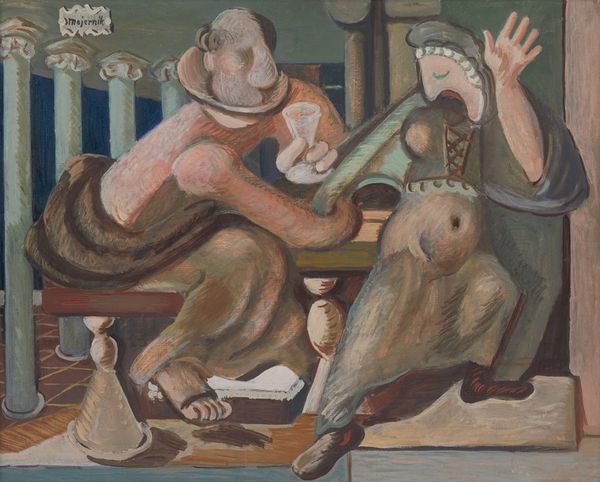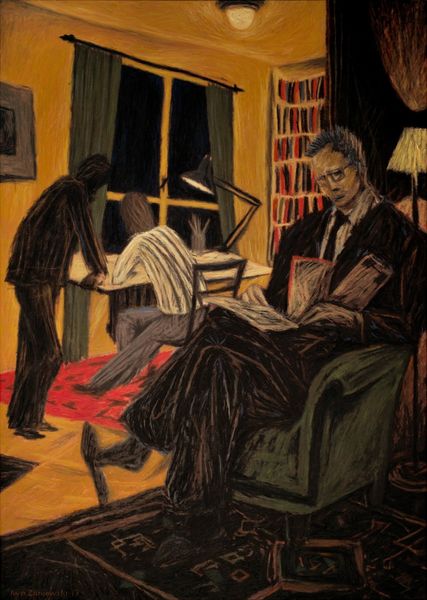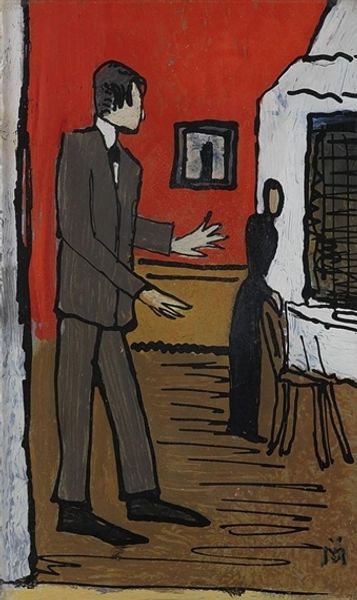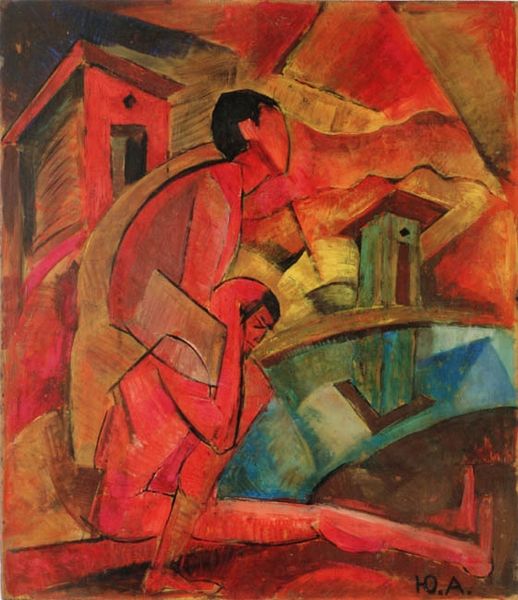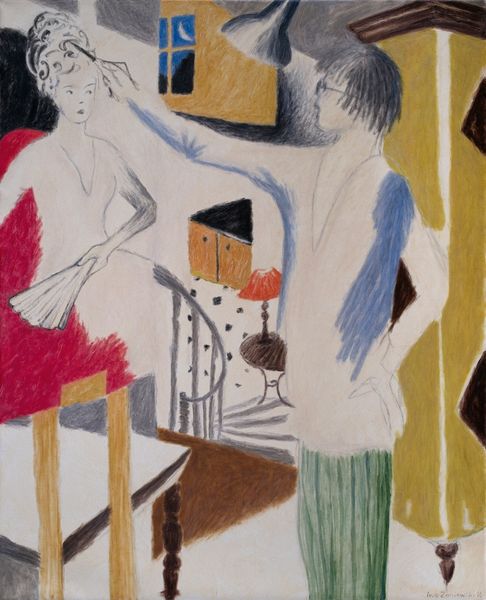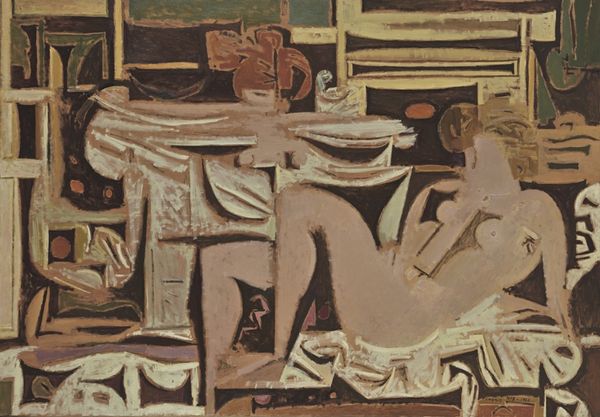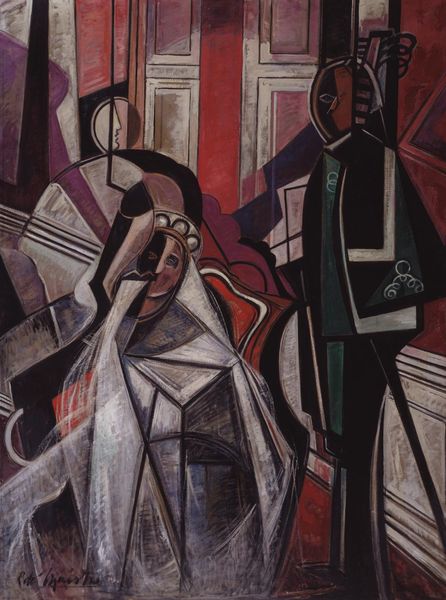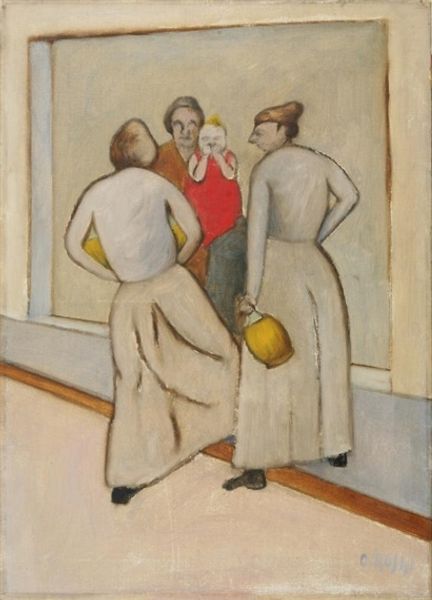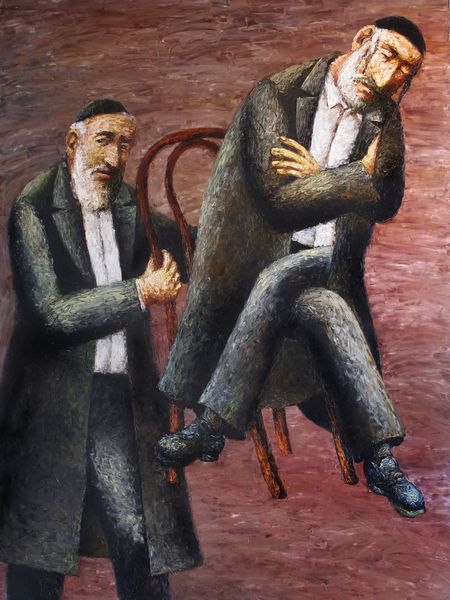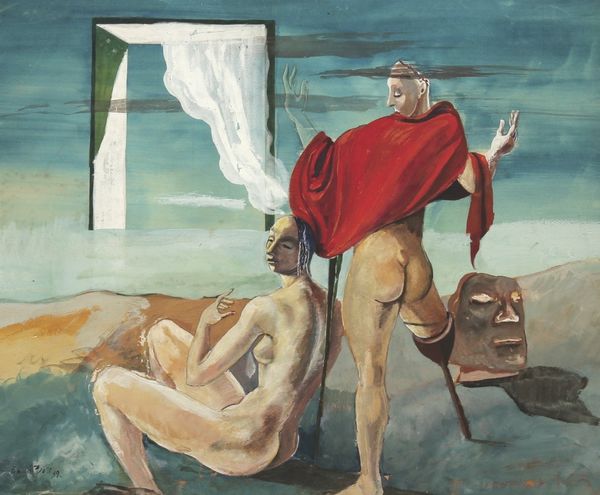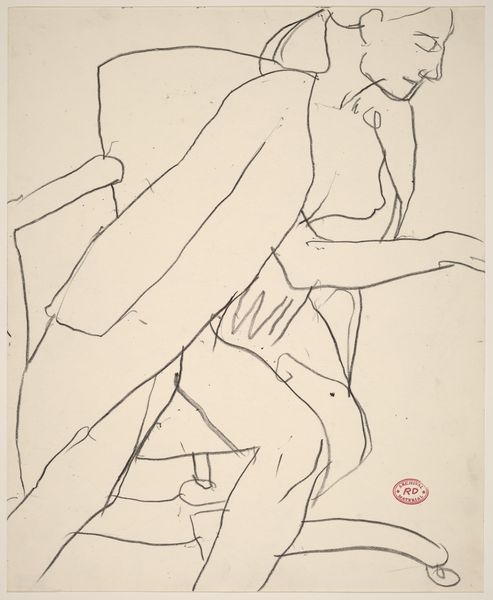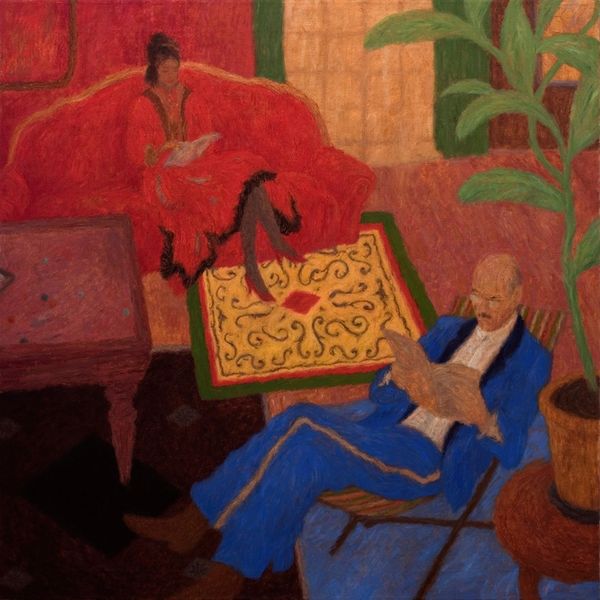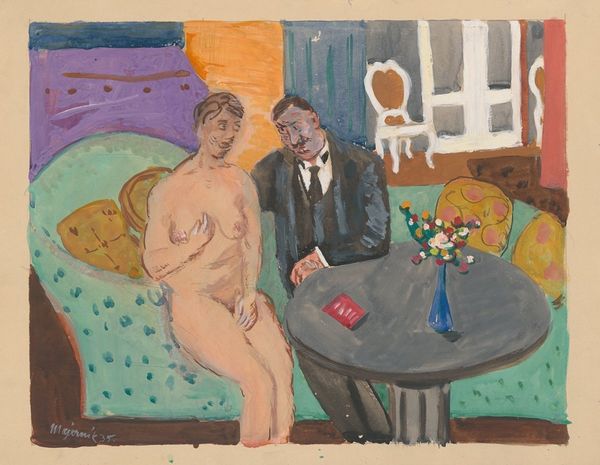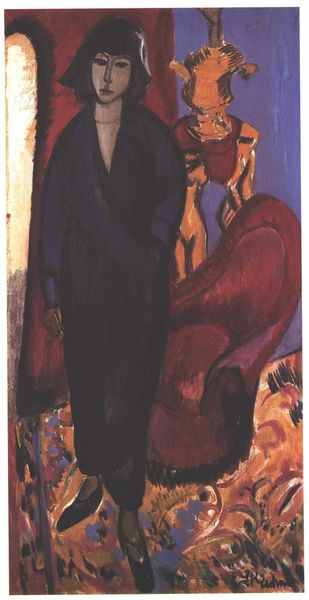
Dimensions: support: 1162 x 889 mm frame: 1457 x 1188 x 88 mm
Copyright: © ADAGP, Paris and DACS, London 2014 | CC-BY-NC-ND 4.0 DEED, Photo: Tate
Curator: Max Ernst's "Pietà or Revolution by Night" at the Tate, presents a haunting scene rendered in oil on canvas. It's quite large, almost 117 by 89 centimeters. Editor: The mood is so unsettling. The muted tones and awkward angles give off a sense of unease. Curator: Ernst painted this while exiled from Nazi Germany; it directly critiques the patriarchal structures of the time, and perhaps his own fraught relationship with his father. Editor: Given the stark contrast between the figure in red pants and the muted earth tones, could that material contrast symbolize conflicting ideologies or social classes? Curator: I suspect the use of color and form served to challenge the established power structures and the traditional artistic notions, even the idea of the "pietà" itself. Editor: It certainly makes you ponder how social upheaval shapes the very materials and processes artists employ. A poignant and complex piece. Curator: Indeed, a potent reminder of art's capacity to challenge and reflect societal tensions.
Comments
tatemodern 8 months ago
⋮
http://www.tate.org.uk/art/artworks/ernst-pieta-or-revolution-by-night-t03252
Join the conversation
Join millions of artists and users on Artera today and experience the ultimate creative platform.
tatemodern 8 months ago
⋮
Ernst was a surrealist artist. Inspired by the psychoanalyst Sigmund Freud’s (1856–1939) theory of the unconscious, surrealism used irrational images to portray the working of the human mind. Here Ernst replaces the popular Renaissance scene of Madonna cradling the body of Christ (known as Pietà) with an image of the artist himself, held by his father. Ernst paints his father following the traditional iconography of the Madonna, Mother of Christ. He subverts the original scene, showing instead a father figure in a caring role traditionally associated with women and mothers. Gallery label, September 2024
